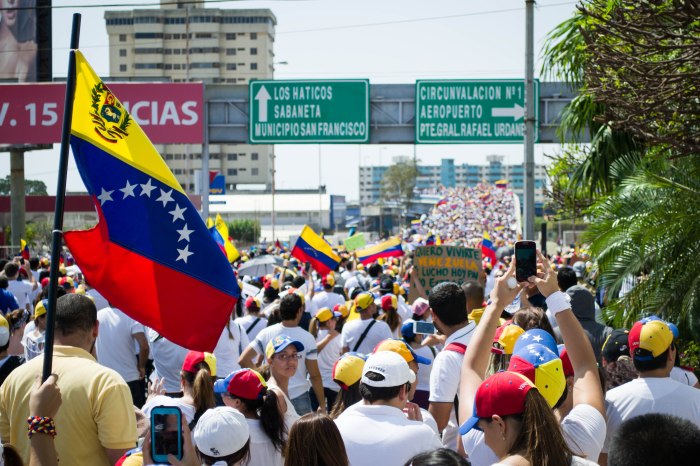An important producer of soap operas, Venezuela nowadays seems to be shooting a sequel of a story that has captivated the country for almost a century. Popular protest is getting out of hand, students are assassinated in the streets of Caracas and Valencia, the army is preparing an intervention, and the president is eagerly looking for a conspiracy and a common enemy he can blame for his own incompetence. To his advantage, the world is not watching, distracted as it is by the Syrian crisis and the events in the Ukraine. However, even if Nicolás Maduro manages to regain control of the situation, the main question is not whether the Bolivarian Revolution will come to an end, but when.
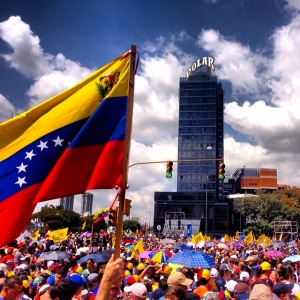 Exactly a century ago, Venezuela appeared to be looking forward to a bright future that would turn a somewhat peripheral and isolated region into a modern country and an example of stability and, in time, democracy. In the nineteenth century, the country had been a typical post-independence republic, where chaos was the only recurrent factor. Between 1831 and 1908, it had seen 37 take-overs, more than 730 armed conflicts, one of them costing the lives of 40,000 people, and it had been governed mostly by military generals. In 1914, however, oil was discovered beneath Lake Maracaibo in the western part of the country. It took some years before the full extent of the oil reserves became apparent and production took off, but by 1929 Venezuela was the second biggest oil producing, and the biggest oil exporting country in the world. From then onwards, oil was the most important tool in the hands of governments to give shape to Venezuelan society. By ‘sowing oil’ (‘sembrar el petróleo’), as the writer Arturo Uslar Pietri called it in the 1930s, Venezuela would be able to escape the tragic destiny that befell many other Latin American countries as a consequence of their economy’s dependence on one, or at most two, export commodities, in general agricultural products prone to violent market fluctuations.
Exactly a century ago, Venezuela appeared to be looking forward to a bright future that would turn a somewhat peripheral and isolated region into a modern country and an example of stability and, in time, democracy. In the nineteenth century, the country had been a typical post-independence republic, where chaos was the only recurrent factor. Between 1831 and 1908, it had seen 37 take-overs, more than 730 armed conflicts, one of them costing the lives of 40,000 people, and it had been governed mostly by military generals. In 1914, however, oil was discovered beneath Lake Maracaibo in the western part of the country. It took some years before the full extent of the oil reserves became apparent and production took off, but by 1929 Venezuela was the second biggest oil producing, and the biggest oil exporting country in the world. From then onwards, oil was the most important tool in the hands of governments to give shape to Venezuelan society. By ‘sowing oil’ (‘sembrar el petróleo’), as the writer Arturo Uslar Pietri called it in the 1930s, Venezuela would be able to escape the tragic destiny that befell many other Latin American countries as a consequence of their economy’s dependence on one, or at most two, export commodities, in general agricultural products prone to violent market fluctuations.
The first to use oil as a political instrument was General Juan Vicente Gómez, nicknamed the Tyrant of the Andes, who seized power in 1908. He used oil revenues to reduce the external debt, build roads, and construct housing and ports. Venezuela became one of the favourite destinations of European immigrants, and Caracas was transformed into an important financial centre. The country itself evolved from a loosely organised confederation of rural baronies, controlled by local caudillos, into a highly centralised state, administrated by a strong central government. After his death in 1935, economic development and the growth of the middle class gradually stimulated political awareness. Political parties were created, trade unions came into being. But the military made use of the oil money in order to curb the process of transition to democracy. In the 1950s, during the dictatorship of Marcos Pérez Jiménez, Venezuela became the biggest oil producing country in the world. Caracas was rebuilt and modelled upon North American cities.
Because Pérez also ruthlessly suppressed any form of opposition, people eventually became tired of authoritarianism. Since its independence in 1831, the country had been governed by democratically elected civilian presidents for scarcely ten years. The political and social emancipation of the civil society eventually forced the military to return to their barracks, which they did in 1958 allowing democratic elections. Although they attempted to return to power on several occasions, the system that was installed by the two major political parties of that time, the social democrats and Christian democrats, prevented them from doing so. This Venezuelan form of democracy, which was called Partidocracia, divided power and government positions among both parties and created political stability. While other countries groaned under brutal dictatorial regimes, such as the dictatorship of Augusto Pinochet in Chili or the military regime of Jorge Videla in Argentina, or were torn apart by civil wars between right wing governments and left wing guerrilla, as in Guatemala, El Salvador, Nicaragua, Peru, and Colombia, Venezuela was a paragon of tranquillity; even the communist guerrilla that briefly came into being as a reaction on the exclusivity of the two party system, soon laid down their arms and adhered to the democratic process. Booming oil prices in the 1960s and 1970s kept the system going. The nationalisation of the petroleum industry in 1976 secured oil revenues for the government. At that time, Venezuela was sometimes referred to as ‘Saudi Venezuela’.
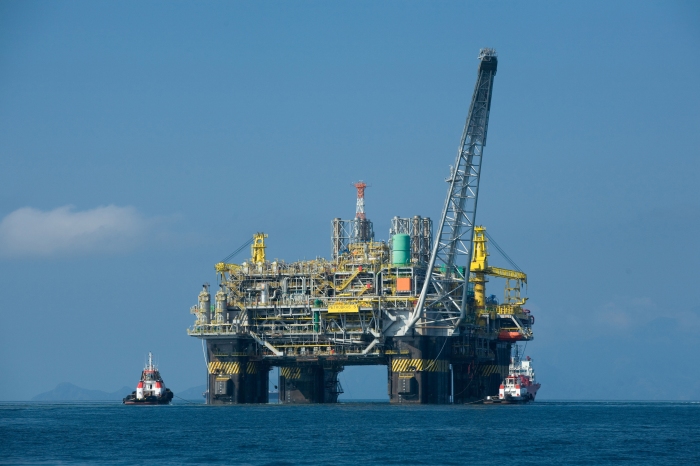 Oil also allowed Venezuela to pursue an active and fairly independent foreign policy. Venezuela was a founding member of the Organisation of American States (OAS) in 1948, the Organisation of the Petroleum Exporting Countries (OPEC) in 1960, and the Contadora Group in 1983, which aimed at ending the armed conflicts in El Salvador, Guatemala and Nicaragua in a peaceful way, and limiting unilateral action by the United States which sought to protect its interest in the region. Venezuela supported the Sandinista National Liberation Front (FLNS) in Nicaragua, and chose the side of Argentina in the Falklands War (1982). Finally, it provided developing aid to countries in the region and stimulated free trade associations and agreements.
Oil also allowed Venezuela to pursue an active and fairly independent foreign policy. Venezuela was a founding member of the Organisation of American States (OAS) in 1948, the Organisation of the Petroleum Exporting Countries (OPEC) in 1960, and the Contadora Group in 1983, which aimed at ending the armed conflicts in El Salvador, Guatemala and Nicaragua in a peaceful way, and limiting unilateral action by the United States which sought to protect its interest in the region. Venezuela supported the Sandinista National Liberation Front (FLNS) in Nicaragua, and chose the side of Argentina in the Falklands War (1982). Finally, it provided developing aid to countries in the region and stimulated free trade associations and agreements.
However, the pre-eminence of oil also produced major negative side effects. During the nineteenth century Venezuela was largely an agrarian country that produced food (especially meat) for domestic consumption, and cacao and coffee for the American and European markets. By 1900 the country was the second biggest exporter of coffee in the world. The rise of the petroleum industry resulted in a strong currency that made Venezuelan agricultural products less competitive on the world market. As a result, farming languished and people abandoned the countryside. Nowadays, two thirds of Venezuela’s inhabitants live near the coastline while Caracas houses one sixth of the total population of the country. Vast areas of the country are virtually unsettled, and barely 5% of the Venezuelan soil is used for agriculture, mostly large haciendas in the coastal region, and cattle farms in the plains north of the Orinoco. Small estates have completely disappeared, and large production units only continue to exist thanks to state subsidies. Land reform was promised several times, but was unsuccessful time and again. In 1958, 2% of the population still owned more than 80% of the land, and this ratio hardly changed in the following decades.
An important consequence of agriculture being completely neglected by the central government concerns Venezuela’s food supply. By 2000, the country imported more than 80% of all its food supplies, and had thus become extremely dependent on the neighbouring countries and the international market when it comes to feeding its population. Price fluctuations have an immediate effect on the Venezuelan balance of trade; interruption of supply results in shortages and empty shop shelves.
Agriculture was not the only economic activity that almost disappeared as the petroleum industry came to dominate the Venezuelan economy. Investments in the heavy industry around Ciudad Bolivar, mainly iron, steel and aluminium production, decreased overall in spite of large state-owned industrial projects developed in the 1970s. The manufacturing of consumer goods, such as textile fabrics, shoes, and paper, persisted, although in increasingly deteriorating conditions. Tourism was hardly developed, except for beach tourism at Isla Margarita and a few resorts on the eastern coast.
The effects of oil resources in the social sphere were no less important. In a way, oil altered power relations within Venezuelan society. An elite of local caudillos and large landowners with their power base in the countryside, that had dominated Venezuelan politics during the whole of the nineteenth century, was replaced by a new upper class of entrepreneurs and investors that lived in urban centres. Several families closely related to Juan Vicente Gómez though, did manage to adapt by cleverly using the oil concessions the General presented them with. However, in the end the overall picture did not change much; up to 1998 Venezuela was dominated by a small elite of white, rich and conservative families. Under authoritarian regimes they were in league with the military, and once democracy was restored, they took control over the closed system of Partidocracia that governed the country without the involvement of ordinary citizens. In the decades that followed, the ruling class became increasingly alienated from the common people. Oil profits were redistributed among its members. Corruption turned into one of the main problems of Venezuelan politics and society. Party leaders maintained huge networks, based on clientelism, with ramifications in all sectors of society. The number of public institutions and government offices increased as oil revenues grew, allowing politicians to reward their supporters. Public works created possibilities for personal enrichment and opportunities to assign contracts to friends and followers. The middle class that thus emerged largely depended on this system. Although the gulf between the rich and the poor was getting deeper and deeper over the years, as long as most social classes progressed, these divisive trends did not attract much attention. The public outcry was modest, as even the lower classes received some benefits. Intellectuals, assisted by the media, called on the elite to reform the political system and to re-establish contact between the Venezuelan society and its leaders, but their voices were not heard.
All this changed in the 1980s. Oil prices plummeted quickly, causing problems with the repayment of the external debt. New loans were negotiated which obliged the government to cut back on public spending. Social programmes were cancelled, and salaries were reduced. Inflation suddenly became a huge problem, especially for the poor. At the 1989 elections, people voted for Carlos Andrés Pérez, whose first presidency from 1974 to 1979 coincided with economic and social prosperity. However, this time he was not able to solve the problems without taking structural measures imposed by the International Monetary Fund (in return for a 4.5 billion US dollars loan), and inspired by the so-called Washington Consensus. State-owned companies were privatised, state intervention and price monitoring were restricted, the tax system was reformed, and social services were scrapped. Petrol prices were liberalised and almost immediately doubled, and public transport prices increased by 30%. People, especially the poorer layers of society, rose against the government and engaged in looting. This uprising is known as the Caracazo. Congress declared a state of emergency and imposed martial law. The National Guard killed between 1,000 and 3,000 civilians. Pérez eventually regained control over the situation, but he was not able to save the Partidocracia, especially when a few years later it became clear that during his second term he had embezzled at least 250 billion bolivars in presidential funds. In 1993 he was impeached.
The Caracazo, and especially the response of the armed forces, shocked a group of young army officers. Already back in 1982 this group had founded the Movimiento Bolivariano Revolucionario (MBR) in order to bring about a change in Venezuelan society and eliminate corruption. A young air-force officer, Colonel Hugo Chávez, was their leader. They started preparing a coup d’état that was carried out in February 1992. Chávez failed to seize power and was imprisoned, but from his cell he continued dominating public opinion with newspaper articles. When he was released, he started preparing his candidacy for the 1998 elections, which he eventually won with 56.2% of the vote. His main election promises were the end of Partidocracia, the eradication of corruption, and the fight against poverty.
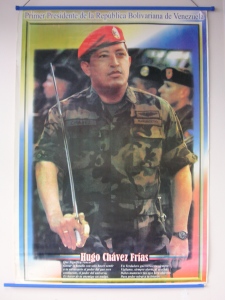 Chávez’s government brought major changes to Venezuelan society. His Bolivarian Revolution focussed on the lower classes and on ethnic minorities such as the native peoples and the descendants of African slaves. (The name Chávez gave to his political programme is, by the way, quite curious, as Simón Bolivar hated blacks and Indians, and at least in the beginning of his uprising, excluded them from his revolutionary movement.) Probably for the first time in Venezuelan history, the poor had the impression that somebody was actually listening to their complaints and was taking measures to improve their situation. This helps to explain why in their eyes he rapidly became a god, and never ceased to be one.
Chávez’s government brought major changes to Venezuelan society. His Bolivarian Revolution focussed on the lower classes and on ethnic minorities such as the native peoples and the descendants of African slaves. (The name Chávez gave to his political programme is, by the way, quite curious, as Simón Bolivar hated blacks and Indians, and at least in the beginning of his uprising, excluded them from his revolutionary movement.) Probably for the first time in Venezuelan history, the poor had the impression that somebody was actually listening to their complaints and was taking measures to improve their situation. This helps to explain why in their eyes he rapidly became a god, and never ceased to be one.
One of his first and most important political projects was a new constitution, approved in 1999, that included human rights such as the right to (free) education, housing, healthcare and food, and protections for women and indigenous peoples, that recognize, for example, all indigenous languages that are spoken in the country. The traditional political parties and trade unions, which Chávez considered to be remnants of the Partidocracia, disappeared or were dismantled and replaced by an assortment of ‘Bolivarian’ trade unions, action committees, residents’ associations and cooperative societies. All are supported politically and financially by the central government, and are the backbone of a Cuban-like system of ‘participatory democracy’ that is to replace the western model of representative democracy.
Tens of social programmes, most of them financed by oil revenues, were introduced to improve the living conditions of Venezuelans. Especially after Chávez gained almost complete control over the petroleum industry in 2002 (up to then the state company was administered by an independent board), and subsequently survived three attempts by his opponents to remove him from power, including the 2003 referendum to recall him, he almost completely eliminated the opposition to his regime and was thus able to carry out the political, economic and social reform programmes his Bolivarian revolution needed. His attempts to gain full control over Venezuelan society took advantage of the fact that after 9/11 the United States focused on the Middle East and in a way forgot about Latin America. They thus facilitated the Pink Tide – the rise of left wing governments – that provided Chávez with allies in most of Venezuela’s neighbouring countries. These governments favoured his plans of a strong regional political and economic integration in order to counterbalance the influence of Washington. Partnerships such as Petrosur, Petrocaribe, Telesur, Banco del Sur, Unasur, and the ALBA-TPC free trade agreement, which replaced the Free Trade Area of the Americas (FTAA or ALCA) promoted by the US, stimulated interregional trade and made the country less dependent of the US and Europe.
The backbone of Chávez’s social policy was his misiones, campaigns that concentrated on specific goals. Several of them improved the education system. Misión Robinson taught 1.8 million people to read and to write. Misión Ribas included more than 1 million children in the elementary and secondary education system. Misión Sucre improved access to higher education for more than 700,000 undergraduates. Other misiones focused on food supply and health care. Misión Barrio Adentro (‘Mission inside the Neighbourhood’) created brand new and well equipped medical clinics in poor neighbourhoods and rural villages, manned by tens of thousands of Cuban physicians. Misión Alimentación (‘Mission Food’) aimed at supplying basic products such as flour, oil, and meat without intermediaries through government run grocery stores (e.g. Mercal). At the same time, the Casas de Alimentación, a kind of community kitchens, provided more than 15 million people with three daily free meals. Each year, the housing programme was building 100,000 social housing units. Even more important than the results of these misiones is without any doubt the fact that probably for the first time in history, the Venezuelan poor felt as if they counted again, and that finally they were also benefitting from the oil revenues that previously only went to the upper class.
As a result, Venezuela under Chávez can show more than satisfactory results. In 2012, the Gini-index, which measures inequality, ranked Venezuela 83, which, although it seems to be a rather moderate outcome, is the third best result in Latin America. The index of household poverty fell from 44% in 1998 to 26% by the middle of 2011; in the same period extreme poverty has fallen from 25% to 7.6%. Infant malnutrition in children under five years old was reduced to 2.9% in 2011, and child mortality is among the lowest on the continent. With regard to illiteracy, Venezuela is one of the best pupils of Latin America; the government even maintains that the problem has been rooted out.
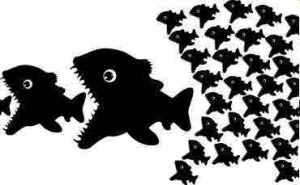 Looking at these results, one might ask why Venezuelan citizens are protesting nowadays. At first sight, during Hugo Chávez’s government Venezuela underwent a complete metamorphosis, but when one takes a more careful look at a decade of Bolivarian Revolution, it becomes clear that Chávez’s government did not alter the foundations of Venezuelan society itself.
Looking at these results, one might ask why Venezuelan citizens are protesting nowadays. At first sight, during Hugo Chávez’s government Venezuela underwent a complete metamorphosis, but when one takes a more careful look at a decade of Bolivarian Revolution, it becomes clear that Chávez’s government did not alter the foundations of Venezuelan society itself.
To begin with, Chávez suppressed the two-party system, but did not end social division. Instead of including all sectors of Venezuelan society in his reform programme, he chose the line of confrontation and played the lower classes off against the middle classes and the entrepreneurs. The result has been a sharply divided society that consists of believers – those supporting the Bolivarian Revolution, including left wing governments and opponents of the United States such as Cuba, Iran, Russia, and Libya – and enemies – all the others, including the rich, the middle class, capitalists, private employers, newspapers, television and radio stations that make critical comments, students, the Church, the Americans, Spain, and any other capitalist country. This bipolarity is more than a figure of speech that is applied every time the regime is confronted with a new set back. The benefits of the Bolivarian Revolution, and in particular of the social programmes, only accrue to people that favour the Chávez’s regime. In this newly divided society, the old powers do not defend their interests, they merely fight not to be completely wiped out.
Secondly, and related to the first conclusion, Chávez did not end authoritarianism and the clientelism which accompanies it. The 1999 constitution gave Chávez control over the other government institutions, including the Congress and the Supreme Court. Soon after his election, the army was declared the vanguard of the revolution. The Venezuelan society ‘militarised’ at high speed. Army officers were appointed ministers, ambassadors, and managers of state companies. Servicemen were deployed to build roads, construct schools and medical clinics, and distribute food. In fact, the Mercal grocery stores are in the hands of the military. And when in 2002 Chávez fired more than 18,000 staff members of the Venezuelan oil company, directors as well as labourers, soldiers took over the production of oil. At the same time, Chávez altered the constitution in order to allow his re-election, and influenced voting, for example, by naturalising, a few months before the elections of 2004, hundreds of thousands of Colombian immigrants. He eliminated critical voices, closing newspapers, or discontinuing the concession of dissident radio and television stations. Intimidation, violence and murder further restricted the freedom of the press. Chávez exposed the Venezuelans that opposed him individually by publishing the names of the people that had signed the request for the 2003 referendum on the internet. Individuals whose names were on the list soon got the impression that they were excluded from government programmes. Human rights are frequently violated, and torture, disappearance and unlawful imprisonment and executions are still a daily reality.
Thirdly, Chávez did not enhance the self-reliance of the lower classes. On the contrary, his populist socialism sometimes created dependency of whole families on the misiones. He mostly distributed money and combatted poverty with consumption instead of development. He did not increase employment other than in the public sector and state companies. Agriculture as well as industry continues being neglected. His land reform of 2001 failed. Between 2002 and 2007 he redistributed 3.5 million hectares of land that was mostly in the hands of the government already, but he did not touch large landowners, although most fertile land belongs to them. As a consequence, Chávez was not able to make people return to the countryside and increase food production. Venezuela imports 80% of its food supplies, mainly from the United States, Brazil and Colombia. Of the 70 billion dollars of oil revenues, 45 billion are immediately spent on the import of food. Many of the poor stay in the urban centres, where social programmes are easily accessible.
Fourthly, Chávez did not root out nepotism and corruption. He appointed his own father to the office of governor of the state where he was born; one of his brothers assists his father as an advisor. His second brother was made mayor of his hometown Sabaneta, and his third brother became ambassador in Cuba, secretary of Education and advisor to the president himself. Chávez’s government gave rise to what has been called the Boliburguesía, the ‘Bolibourgeoisie’, a group of nouveaux riches that manage state companies and steal government funds, thus perpetuating the corruption problem. On the 2013 corruption index of Transparency International, Venezuela ranked 160 out of 177 countries. The misiones lack oversight; in fact, they need not to be approved by Congress, being the president himself the only controlling institution. The government never makes public the projects that receive the money; neither does it publish the final results of the projects. Between 2005 and 2008 Chávez thus spent more than 30 billion dollars on social programmes without ever rendering account.
In combination with other recurrent problems such as the lack of diversification of the economy (oil and derivatives represent 90% of Venezuela’s exports) and of foreign markets (trade with the US represents 60% of the country’s exports and 30% of its imports; on the other hand, efforts to diversify exports resulted in a growing dependency of China), the decrease of oil production as a consequence of the lack of maintenance and investments (since 2002 revenues are increasingly intended for social spending), the nationalisation of enterprises since 2006, and the subsequent decrease of their production rates, the effects of price control that affects profit margins and causes private entrepreneurs to simply stop production or sell their products on the foreign markets (where prices are unregulated), the subsequent shortage of basic products such as milk, chicken, medicines and electricity, soaring prices and inflation that is getting out of hand, unemployment, and the high level of crime in Venezuelan cities, to name but the most important problems the Venezuelan government is confronted with, one understands that the most important question is not what Chávez and the Bolivarian Revolution did for their country, but what they could have done with the resources at their disposal, but ultimately failed to do.
It seems that Chávez missed a golden opportunity to rebuild his land in a sustainable way. The Venezuelans students that are now revolting are the first to realise this. As long as Nicolás Maduro disposes of enough resources to keep social spending going and lower classes calm, his Chávez-like tactics of blaming independent shop owners of selling their goods at extortionate prices (allowing the mob to plunder their shops), subversive students and fascists wanting to overthrow the government, and the Americans for supposedly making attempts on his life and organising a coup d’état, will change nothing in Venezuela. In order to solve the situation, Maduro must first overcome disruption and start thinking of a political programme that include all Venezuelans. The problem is that it is only a question of time before oil prices collapse or oil is replaced by renewable energy or other power sources such as shale gas. Twenty-five years have been lost since the Caracazo, and fifteen since Chávez took office. Above all, Maduro being a bad and definitely less popular copy of Chávez, and his intent to make use of Chávez’s legacy and his almost godlike image to keep Venezuelans in line leads one to suspect that the man is not capable of changing things. Hopefully the course of events will change him and create probably the last opportunity to change the face of Venezuelan society.
